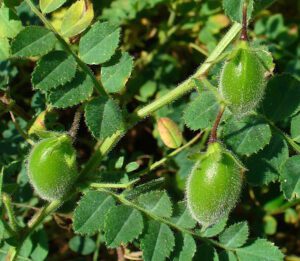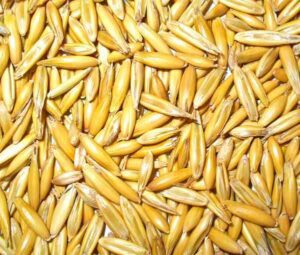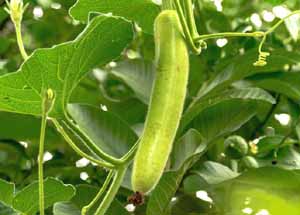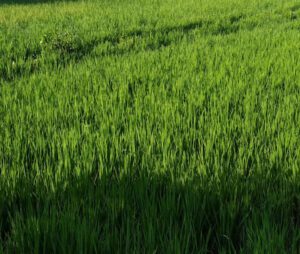Cauliflower farming is a very common and popular business throughout the world. It is a very common and popular vegetable found in almost everywhere. It is very tasty, flavorful, nutritious and consuming cauliflower regularly has many health benefits.
Cauliflower is actually one of several vegetables in the species Brassica oleracea in the genus Brassica, which is in the Brassicaceae (or Mustard) family. It is an annual plant that is produced by seed.
Typically, only the head is eaten (the edible white flesh sometimes called ‘curd’). The head is composed of a white inflorescence meristem.
Cauliflower heads resemble those in broccoli, which differs in having flower buds as the edible portion. Brassica oleracea also includes broccoli, Brussels sprouts, cabbage, collard greens, and kale, collectively called “cole” crops, though they are of different cultivar groups.
Cauliflower is among the temperamental vegetables that requires careful maintenance and other caring. It is actually a cool season crop and can’t tolerate heat or excessive cold.
Cauliflower is generally grown commercially because of it’s temperature requirements. And this crop is not considered good for the beginners.
The cauliflower is a very healthy vegetable and you can enjoy it in many different ways including soups, stews, stir-fries, steamed, in salad or even raw.
Raw cauliflower is enriched in calories, carbohydrates, dietary fiber, protein and low amount of fat. It is also a great source of vitamin C, and moderate amount of vitamin B and vitamin K.
In 2016, global production of cauliflowers (combined for production reports with broccoli) was 25.2 million tonnes, led by China and India which, combined, had 73% of the world total. Secondary producers, having 0.4–1.3 million tonnes annually, were the United States, Spain, Mexico and Italy.[1]
However, commercial cauliflower farming is a very good business idea for making good amount of profits. Here we are trying to describe more information about starting and operating this business.
Cauliflower Nutritional Benefits
Cauliflower is considered as a very good and nutritious vegetable. It works as anti-cancer agent. It promotes heart health and lower cholesterol levels.
Raw cauliflower is 92% water, 5% carbohydrates, 2% protein, and contains negligible fat (table). A 100 gram reference amount of raw cauliflower provides 25 calories, and has a high content (20% or more of the Daily Value, DV) of vitamin C (58% DV) and moderate levels of several B vitamins and vitamin K (13–15% DV; table). Contents of dietary minerals are low (7% DV or less).
Cauliflower is an excellent source of vitamins and minerals. It contains some of almost every vitamin and mineral that you need. 1 cup (128 grams) of raw cauliflower contain the following nutrients:
- Calories: 25
- Fiber: 3 grams
- Vitamin C: 77% of the daily recommended amount
- Vitamin K: 20% of the daily recommended amount
- Vitamin B6: 11% of the daily recommended amount
- Folate: 14% of the daily recommended amount
- Pantothenic acid: 9% of the daily recommended amount
- Potassium: 9% of the daily recommended amount
- Manganese: 8% of the daily recommended amount
- Magnesium: 4% of the daily recommended amount
- Phosphorus: 4% of the daily recommended amount
The nutrition profile of cauliflower is quite impressive. Here we are trying to list the top health benefits of consuming cauliflower.
- Cauliflower is an excellent source of some essential vitamins and minerals. It contains some of the most important vitamins and minerals that you will need for good health.
- It is a very good source of fiber, which is beneficial for overall health. Fiber is very important for digestive health and may reduce the risk of several chronic diseases.
- Cauliflower contain significant amount of antioxidants. And antioxidants are beneficial for reducing inflammation and protecting against several chronic diseases.
- Cauliflower is high in fiber and water, but low in calories. And both fiber and water may assist in weight loss.
- This vegetable is a very good source of choline. Choline is a nutrient many people are lacking. It is involved in many processes in the body and works to prevent several diseases.
- Cauliflower is rich in sulforaphane which is a plant compound with many beneficial effects, such as reduced risk of cancer, heart disease and diabetes.
- Cauliflower can replace grains and legumes in many recipes, which is a great way to eat more veggies or follow a low-carb diet.
- Cauliflower can be consumed in many different ways. It can be consumed cooked or raw, and it makes a fantastic addition to just about any dish.
- However, you can enjoy this wonderful vegetable if you start growing cauliflower of your own.
Advantages of Cauliflower Farming
Commercial cauliflower farming is a good and old business. It is not too easy, that’s why it is not recommended for the beginners. Although, this business has many advantages or benefits.
You can start commercial cauliflower farming business for making good amount of profits. Here we are trying to describe more information about the top advantages of starting cauliflower farming business.
- Cauliflower farming is a good and old business idea. And it is very popular throughout the world.
- It is an established business. Many people are already doing this business commercially for making profits.
- Caring the plants is relatively easy, if you know the basics of growing cauliflower.
- Both demand and value of cauliflower are great in the market.
- The cauliflowers can be grown in almost everywhere around the world.
- If you are an unemployed educated person, then commercial cauliflower farming can be a very good business idea for you.
- This business can be a great employment source for the rural poor people.
- Productions costs are moderate, but profits are very good (especially if you can market your products in good prices).
- Marketing cauliflower is very easy, because it has very good demand and value in the market. So, you will probably be able to easily sell your products in the local market.
- As we have mentioned above ‘consuming cauliflower has many health benefits’. And you can enjoy fresh cauliflowers if you start your own cauliflower farming business.
How to Start Cauliflower Farming Business
Starting commercial cauliflower farming will be easy for you if you have prior experience. Caring and other management will be relatively simple for you if you have grown cauliflower before.
The cauliflowers generally grow well in almost all types of environment and soil types. They just require fertile soil with the availability of full sun.

If there is good demand of cauliflower in your area, then you can start this business commercially. Here we are trying to describe more information about starting and operating a successful cauliflower farming business from planting, caring to harvesting and marketing.
Select Good Location
Select a good location for starting your cauliflower farming business. It will be better if your selected land has exposure to full sun. And also ensure that the land is fertile and well drained.
The cauliflower plants generally grow well in all types of soil. Soil with pH range between 6 and 7 is considered good for cauliflower cultivation business.
The cauliflower plants can actually grow well in wide range of soil from sandy loam to clay. Just ensure that the soil is fertile with good drainage system.
Prepare the Soil
Before planting cauliflower plants, you have to prepare the soil perfectly. The cauliflower plants can actually be grown in a wide range of soil from sandy loam to clay.
Bring soil to fine tilth by ploughing land thoroughly. Add as much well decomposed cow dung as possible, and mix well in the soil at the time of last ploughing.
The cauliflower plants grow well in the soil with the pH range between 6 and 7. Add lime in the soil in case of low pH level.
Climate Requirement For Cauliflower Farming
Proper climatic conditions play a very important role in cauliflower production. And suitable climate is required for growing different variety in different conditions.
The cauliflower plants generally grow well in a moist and cool climate. The plants can sustain to low temperatures and also hot climatic conditions.
Extreme dry conditions or low humidity are not suitable for cauliflower production. Temperature between 12°C and 30°C is considered good for optimum production and seed germination.
Lower temperature may result in delays in maturity and undersized curd. And high temperatures cause poor quality of curds.
Best Time For Cauliflower Production
The cauliflower is a cool-season crop and it grows well in colder climates with moist atmospheres. Although, today there are some varieties available that can be grown as a summer or fall crop. But fall crop will produce more quality cauliflower than a summer crop.
Most of the cauliflower varieties require between 1.5 and 3 months of consistently cool weather for maturing properly.
Start the seeds 8 to 12 weeks before the first fall frost if you live in the areas with cool climates. On the other hand, you can plant the seeds in autumn if you are living in warm climates with frost-free winters.
Choose A Good Variety
There are many different cauliflower varieties available throughout the world. And you have to choose a good variety for your business. You can consult with an existing farmer in your area for better recommendations.
The cauliflower varieties are categorized based on their size, shape, color and growing regions. There are actually 4 major groups of cauliflower available. And these groups are Asian, Italian, Northern European Annuals and Northwest European Biennial.
Purchase Seeds/Transplants
The cauliflowers are grown from seeds, and the seeds are common and highly available throughout the world.
So, you will probably be able to easily purchase the seeds from any of your nearest seed supply stores. You can also consider ordering the seeds online. Because today, there are some companies available with online stores.
You can also purchase cauliflower transplants if you don’t want to have the hassles of planting seeds. Depending on your area, the transplants should be available in your local nurseries during the growing season.
Seeds Per Acre
You will need around 500 grams of seed per acre for early season variety. On the other hand, around 250 grams of seeds will be enough for the main season variety.
Planting
You can plant either seeds or transplants for growing cauliflower. If you want to grow from seeds, then start the seeds 4-5 weeks before the plants are needed.
In case of planting from seeds, plant the seeds in rows 3-6 inches apart and up to half an inch deep. Water the seeds regularly during their germination and growth period. Transplant them to the prepared soil in the field, once they grow and become seedlings.
But in case of planting the transplant, plant them 1.5 to 2 feet apart with about 2.5 feet between the rows. Always try to plant the transplants during afternoon. And use a starter fertilizer when planting and then water well.
Caring
The cauliflower plants require much caring and management for proper growth and maximum production. Caring process will be relatively easy if you have prior experience.
Your plants will grow better if you take good care of them. Here we are trying to describe about the caring process for commercial cauliflower farming business.
Fertilizing
Apply well decomposed cow dung@40 tonnes per acre in soil along with Nitrogen@50 kg, Phophorus@25 kg and Potash@25 kg in form of Urea@110 kg, Single Superphosphate@155 kg and Muriate of Potash@40 kg.
Apply whole quantity of cow dung, SSP and MOP and half quantity of Urea before transplanting. Apply remaining quantity of Urea four week after transplanting as top dressing.
Watering
Water immediately after planting the transplants. Apply irrigation at a regular interval depending upon soil and climatic conditions. Apply irrigation at interval of 10 to 15 days during winter season, and 7 to 8 days in summer season.
Mulching
Mulching play a very important role in retaining moisture into the soil. It is also beneficial for controlling weeds from the field. You can use organic materials for controlling weeds from the cauliflower field.
Weed Control
To check weed control apply Fluchloralin 800ml per 150-200 Ltr water before transplantation followed by hand weeding 30 to 40 days after transplanting. Apply Pendimethalin at the rate of 1 Ltr per acre one day before transplanting of seedlings.
Additional Caring
In most cases the cauliflower will start out as a loose head and it will take time for the head to form fully. Depending on the variety, it will take between 75 and 85 days from planting the transplants to form the head.
Tie the outer leaves together over the head with something like tape, rubber band or twine. Do this when the curd is about 2-3 inches in diameter. This is called balancing and it protects the head from the sun and helps you get the desired white color.
Pests & Diseases
The cauliflower plants are susceptible to some common diseases and pests. And these diseases and pests are very harmful for growing cauliflower.
Common diseases of the cauliflower plants include black rot, black leg, black leaf spot, cult root and downy mildew. Crop rotation and destroying the affected plants are the organic ways for preventing all these diseases. Consult with an expert in your area for chemical solution.
cabbage maggots, loopers, aphids, flea beetles, moths, cabbage worms etc. are some common pests of the cauliflower plants. If you notice any of these pests in your field, then either use pesticides or destroy the affected leaves of the plants.
Harvesting
You can start harvesting the cauliflowers when they mature. The heads will appear clear and compact when they mature.
For harvesting, cut the heads off the plant with a large knife. Leave some of the leaves around the head for keeping the cauliflower protected.
Try to harvest the cauliflower in morning or evening time. And keep the products in cool place after harvesting.
Post Harvesting Tasks
After harvesting, do sorting and grading of the cauliflowers depending upon curd size. This will help you getting good price of the product.
Yield
You can expect 20 to 25 ton per acre for early crop. But for late season crop, yield could be about 25 to 30 ton per acre.
Marketing
Marketing cauliflower is very easy, and it is a great advantage of commercial cauliflower farming business. You will probably be able to sell the products easily in your local market.
These are the steps and ways for starting and operating a successful cauliflower farming business. Hope this guide has helped you! Good luck & may God bless you!






